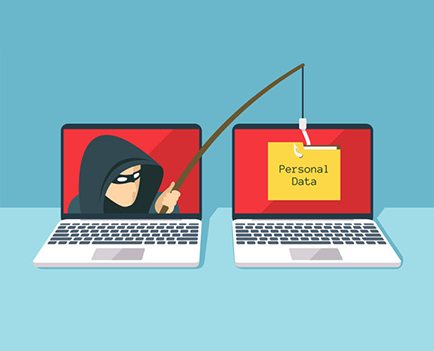What Is Phishing Attack? Phishing Attacks Explained
Phishing is a social engineering technique used by hackers to trick their targets into providing sensitive or valuable information. Typically, phishers target financial information, company data, login credentials, and any other thing that could be of value to them. For a long time, phishers mainly targeted large organizations since this guaranteed more lucrative returns. However, they have changed tact in recent years, with phishing attacks targeting both individuals and corporates.
Anyone who wishes to understand what is phishing attack should take note of the fact that large enterprises are often targeted due to the sheer size of the data in their possession. On their part, individuals are often targeted by phishers because it’s easier to steal data from them. If you fall victim to a phishing attack, you might give out your personal information as well as your company’s data at stake. Therefore, it’s important to access how vulnerable you are. This will help you protect yourself better.

Common Phishing Attacks
Phishing per se refers to broad attacks that target many users at the same time. Email phishing, spear phishing, whaling, and clone phishing are some of the most common phishing attacks that you are likely to encounter. You’ll be forgiven for arguing that phishers use a ‘quantity over quality’ approach as they target potential victims. This approach requires minimal preparation, and the hackers expect that only a few people will take the bait.
The minimal up-front effort shouldn’t fool you into thinking that phishers don’t care about getting victims. They initiate phishing attacks, knowing too well that not everyone will take the bait. Typically, phishing attacks engage users with messages intended to solicit a specific response. Phishers take advantage of victims’ states of mind, emotions, and desires.
For instance, you may be told that you’ve won a gift hamper worth $50 for eating at your favorite restaurant and that you can redeem the hamper by clicking on a link sent to you. Such a message is likely to whip up your emotions, and lead you into clicking on the malicious link unwittingly.
Phishing Techniques
Attackers use different techniques to “phish” their targets. This includes the use of emails, social media platforms, instant messaging, and infected sites. Some phishers still use old-school techniques such as phone calls to contact potential victims. Irrespective of the delivery mechanism that a phisher uses, the same methods are employed by these cybercriminals. Here are some of these techniques:
Link Spoofing
This is arguably the most familiar deception technique that phishers use. Link spoofing entails making malicious URLs to resemble authentic URLs. This increases the likelihood that users won’t notice the difference. It’s easy to identify some spoofed links, but users who are not keen are likely to click on malicious URLs without noticing. In doing so, many end up divulging sensitive personal or company data to phishers without knowing it.
Website Spoofing
URLs are not the only items that can be spoofed by phishers. Sometimes, they create malicious websites that are made to appear authentic. While at it, they also control how URLs appear at the top of the fake webpages. A malicious site can be designed to display a legitimate URL. Some phishers go further to exploit vulnerabilities on legitimate websites to steal login credentials that users provide.
Malicious Redirects
Sometimes, phishers use website redirects to force users’ browsers into interacting with unexpected websites. Often, such malicious redirects involve websites that targeted users frequently visit. Nonetheless, the redirects forcibly lead users to attacker-controlled sites. Phishers can execute such attacks by compromising websites with malicious codes. They can also use existing bugs on target websites to force redirects. Once they land on the sites that they are redirected to, users end up providing their data naïvely.
Preventing Phishing Attacks
After learning what is phishing attack, you should find ways of safeguarding yourself against phishers. Continuous user education is the easiest way of preventing phishing attacks. Such awareness programs equip users with skills for recognizing potential phishing threats and reporting them. Likewise, awareness programs can help you transform users into your best line of defense against phishers.
It’s advisable to implement security tools that can filter suspicious links and attachments before they reach users. Exchange Online Protection is one such program. Malicious URLs should also be screened. There are lots of security tools that can help you quarantine emails that contain malicious links. To bypass the filters that you have in place, some phishers tend to send messages that only containing a large photograph without any text. Character recognition-based filters can help you filter such phishing messages.